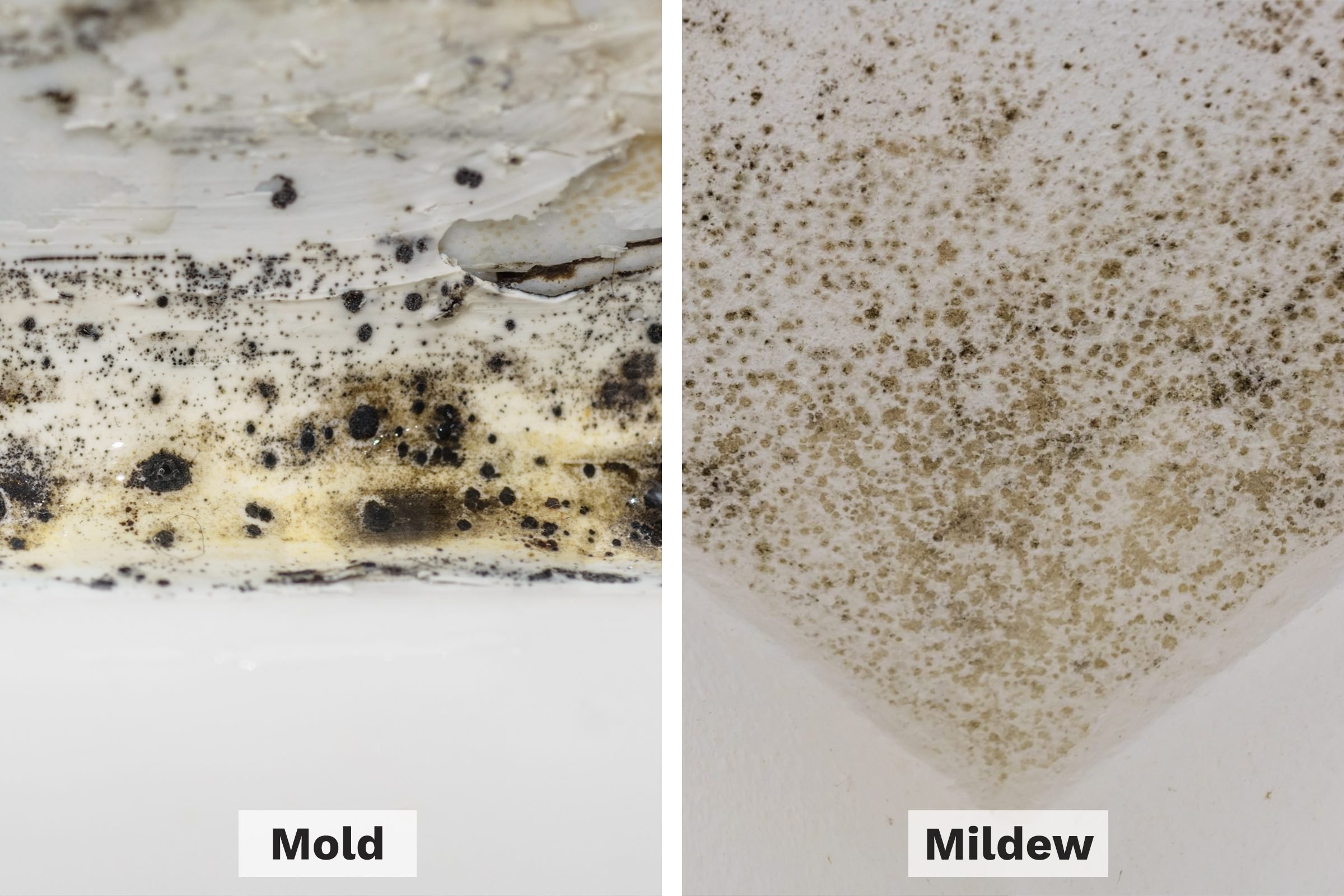If there are any two words homeowners never want to hear, they will be mold and mildew. Both are two words that are often used simultaneously yet with two different meanings. The one thing undoubtedly similar about them is that they can both be dangerous to the structure of the home and family members. If you have a mold and Mildew problem in your home, you should first hire the Mold Removal Company in Burlington to treat or get mold removal and Water Damage Restoration Services in Burlington.
However, what exactly are molds and mildews? Why are homeowners especially wary of these fungi? This article will discuss all that you need to know about these two pervasive organisms. You will find out the meaning, differences, and what you need to do to keep molds and mildews away from your home or apartment.
What is Mold?
Mold is a common fungus. It grows on damp or moist surfaces in the home. Mold allergies can lead to severe reactions. Molds can grow roots into host materials as they grow. The Molds that grow into walls and floors can cause structural damage. Molds are often fuzzy and grow in circular shapes. They also take on dark colors such as brown, green, or black. Molds can sometimes appear yellowish. Molds can be found on food, daily household items, and even walls and windows.
What’s mildew?
The EPA describes mildew as a type of fungus that has a flat growth pattern. Mildews are similar to molds and thrive in moist areas. They can grow on paper, fabric, walls, and windows, as well as other moist surfaces. Mildews are often pale in color and can appear powdery and flaky. Because of their flat growth pattern, mildews are unable to grow into mold-causing materials. They spread outwards like a growing stain. Mildew can be found on paper, fabrics, window sills, and bathroom ceilings.
What is the difference between mold and mildew?
Mold and mildew are not siblings. Many homeowners struggle to tell which one is which. How can you tell the difference? It is easiest to understand what each looks like. These are the striking differences between mildew and mold:
Color
Both mildew and mold can take on different colors. They can take on new colors as they grow. Each one can be distinguished by its specific colors. Mildew can be found in white, yellow, or gray and not mold, which is usually green, brown, or black. Molds are generally darker than mildew.
Texture
Although it is not recommended to touch molds or mildew directly with your naked hands, you can identify each one by its texture. While molds can appear slimy and fuzzy, mildews tend to be powdery or feathery.
Appearance
Most mildews are found on a moist or wet surface. However, molds can often grow beneath damp surfaces. Molds can also penetrate host materials. Mold roots can penetrate deep into the host material and cause damage. Mildews are less destructive than molds in most cases.
Another important difference is the ease of getting rid of mold and mildew. A mildew cleaner can be used to remove mold. They can also cause mild health problems like sneezing and coughing. Molds can be more difficult to get rid of. Molds are best left to professionals as they can cause severe allergic reactions and skin irritations, which can lead to respiratory problems and other health problems. You can get the Mold Remediation Services in Burlington to prevent mold.
Before you can find a solution, it is important to know the difference between mildew and mold. It is important to identify the issues that you are dealing with. This will allow you to decide the best way to address them.
How to prevent mold and mildew
Preventing moisture is the most important step to keeping molds from growing in your home. It is difficult to prevent dampness in areas such as the bathroom or kitchen, but you can ensure that other areas of your house are dry at all times. Keep household items, such as carpets, furniture, and walls, dry.
These are some ways to keep mold and mildew out of your house or office.
- Airflow & Circulation: Let air circulate in your home. This can be done by opening your windows and doors for a specific period of time each day. You will have better airflow in your home.
- Indoor Humidity It’s also important to regulate humidity in the home. A humidifier can help you do this. To prevent mold growth, keep indoor humidity at a minimum of 60%
- Exhaust fans: Installing exhaust fans in the bathrooms and kitchens will help to remove excess moisture from your home. You can lower the likelihood of mold and mildew growth in these areas.
- Get to work quickly if there’s water damage or flooding in your house. To prevent mold growth, any water damage or accumulation should be dried within 24 hours.
Conclusion
Both mildew and mold thrive on moisture. They will grow in areas with high humidity and moist surfaces, such as the basement and kitchen. If you notice any of these symptoms, we recommend that you have both mold and mildew remedied by a professional unless the area is too small.









































